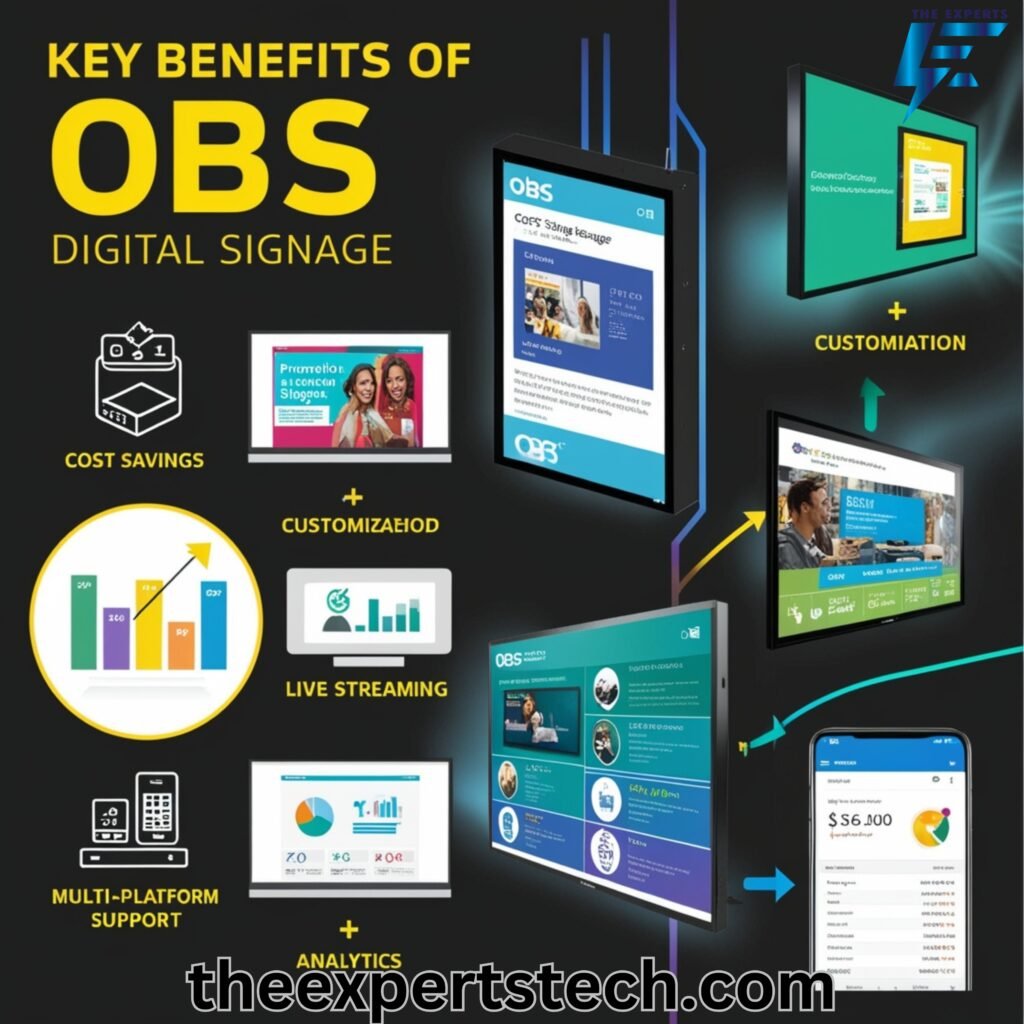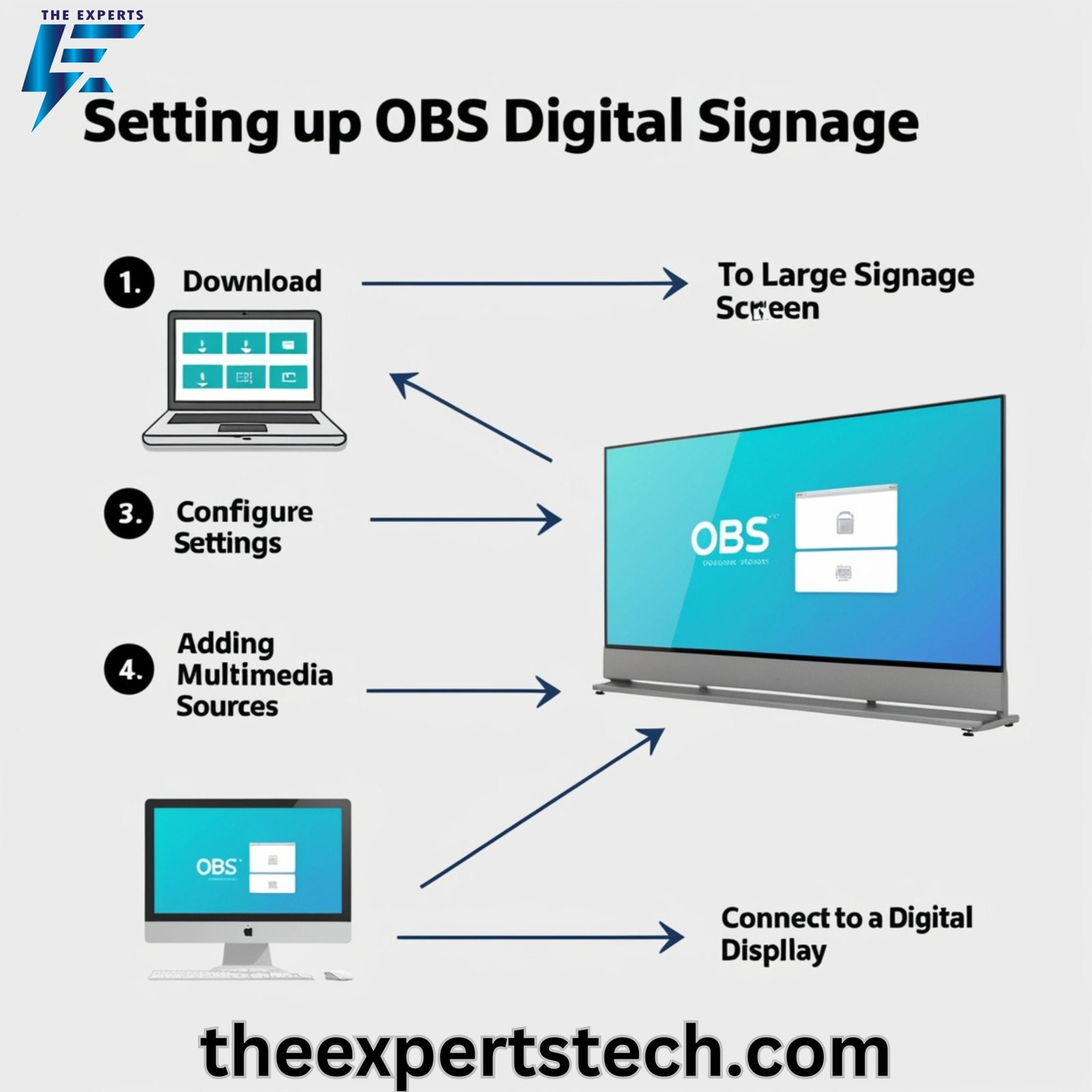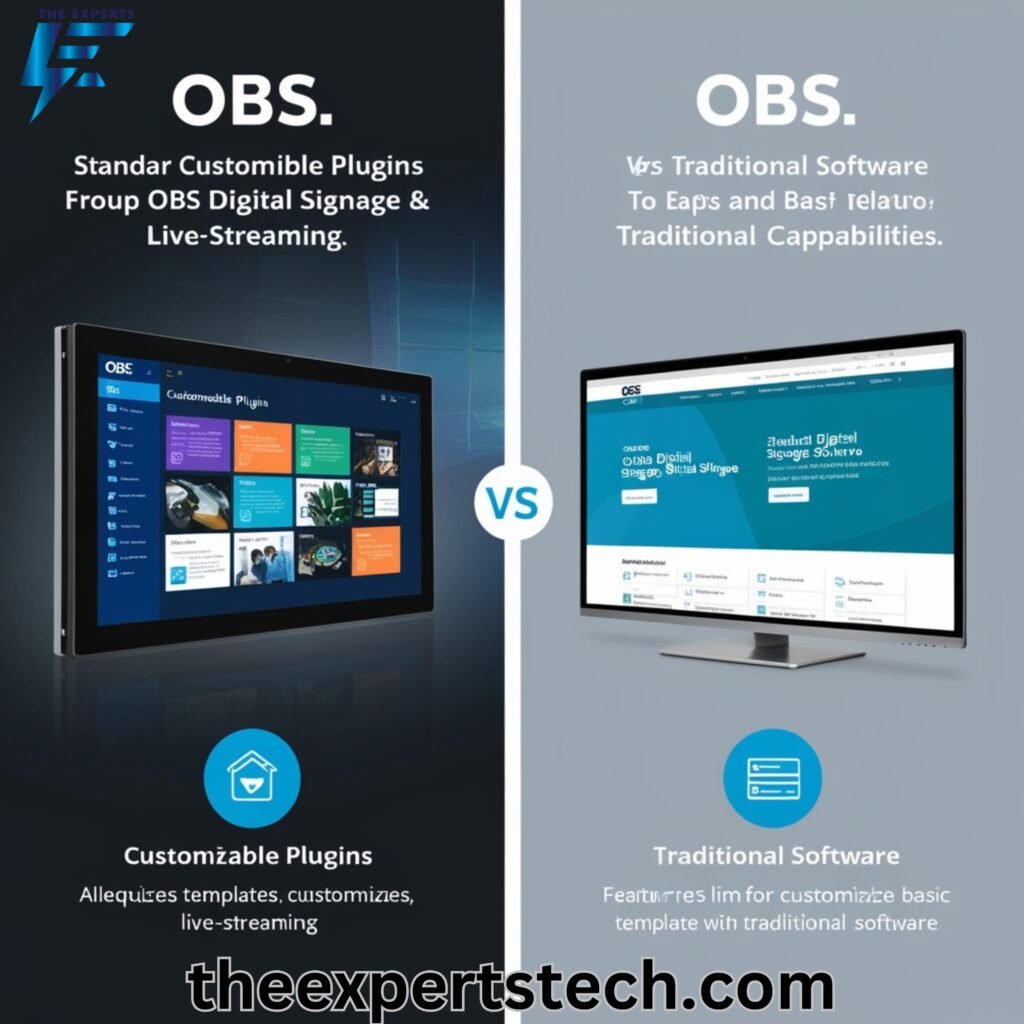Introduction
Businesses in the present digital time seek fresh methods to ensure their information reaches their target audience effectively. Digital signage through OBS has proven itself as an efficient solution which industries continue adopting. Open Broadcaster Software (OBS) powers the powerful combination that optimizes digital signage systems by generating compelling visual content. An exploration of this innovative world will show you how OBS digital signage transforms your communication approaches.
What is OBS Digital Signage?
Open Broadcaster Software functions as an open-source recording and streaming platform. The integration of OBS with digital signage allows businesses to build personalized screen content that serves advertising needs while delivering necessary information and entertainment. The tool’s versatility together with its complex functions enable users to design high-end digital signage material.
Digital signage makes use of digital displays consisting of LED screens and monitors or kiosks to present multimedia content. OBS combined with observation software creates an excellent platform for limitless creative possibilities. Organizations can implement consecutive live streaming alongside real-time update capabilities and animated visual assets through this integrated system platform.


Benefits of Using OBS Digital Signage
1. Cost-Effective Solution
Users benefit from using OBS because it provides free access which means businesses of any size can afford the solution. The open-source nature of OBS does away with the requirement of purchasing costly subscription or licensing systems for proprietary digital signage software.
2. High Customizability
Business users can extensively customize digital signage content through their OBS software installation. Businesses gain access to complete creativity through the software which enables animation integration and real-time data connection features.
3. Multi-Platform Support
The video recording solution OBS operates on multiple devices such as Windows and macOS and Linux operating systems. New digital signage systems benefit from this feature which enables smooth connections to current digital signage installations.
4. Real-Time Streaming
Real-time streaming capabilities allow businesses to transmit live events and product launches and promotional activities to digital signage feeds directly.
5. User-Friendly Interface
The robust feature set of OBS comes with an easy-to-use interface which enables novice users to create and maintain effective digital signage content.
How to Set Up OBS Digital Signage

Step 1: Install OBS Software
Before starting download OBS from its official webpage for your device and perform its installation. Thd software exists free of cost on its verification website.
Step 2: Configure Display Settings
Set up your digital signage requirements through OBS settings from its interface. Set display resolution and aspect ratio values to match your existing monitor screens.
Step 3: Add Sources
Through OBS users have access to multiple addable sources which include images videos text and live feeds. Let the content build up through a proper arrangement of these elements that blend for dynamic effectiveness.
Step 4: Integrate Plugins
OBS functionality improves when users install available plugins. You can improve OBS functionality through the use of plugins that integrate real-time data monitoring together with sophisticated video creation features.
Step 5: Connect to Digital Signage Displays
For displaying the OBS setup you need to connect with signage displays either through direct HDMI cable connections and streaming devices or cloud-based services.
Applications of OBS Digital Signage
- Retail: Showcase promotional offers, product highlights, and live demos.
- Corporate: The display screen should present announcements alongside meeting schedules and essential performance indicators.
- Education: Distributing classes alongside displaying student success stories with ongoing information updates.
- Healthcare: Patients need your platform for health education along with important medical information and instant alerting during emergencies.
- Hospitality: Better guest experiences result from displaying customized content alongside event timelines and promotional ads.
OBS Digital Signage vs. Traditional Digital Signage Software

| Feature | OBS Digital Signage | Traditional Software |
| Cost | Free | Subscription-based |
| Customization | Extensive | Limited |
| Platform Compatibility | Multi-platform | Platform-specific |
| Live Streaming | Yes | Limited |
| Ease of Use | Moderate | Beginner-friendly |
| Plugin Support | Wide range available | Limited |
Challenges of Using OBS for Digital Signage
While OBS digital signage offers numerous benefits, it also comes with certain challenges:
- Learning Curve: Precise management of OBS’s many features posesallenges to users who are new to the platform.
- Hardware Requirements: Strong hardware solutions become necessary for creating high-quality content.
- Limited Built-In Templates: Traditional software platforms provide templates which OBS does not include in its user interface.
- Manual Updates: The software system needs manual updates of both main software applications and plugins by users.
The advantages of OBS significantly surpass its challenges so businesses find this solution highly attractive.
Conclusion
Businesses today benefit from OBS digital signage which provides transformative communication tools that deliver both engagement and affordability. Through OBS technology your business can produce customized display content which engages audiences with meaningful results. The advantages of this solution surpass its hurdles making it adaptable and mightily influential for multiple business sectors. The OBS digital signage system benefits small businesses and large corporations equally by enhancing their content presentation capabilities.
FAQs
1. What is OBS mainly used for?
OBS is primarily used for video recording and live streaming. It allows users to capture, edit, and broadcast video content across various platforms such as YouTube, Twitch, and Facebook Live. Its open-source nature and advanced features make it a popular choice among content creators and businesses alike.
2. What are the disadvantages of OBS?
Although OBS is a powerful tool, it has some drawbacks. These include a steep learning curve, lack of built-in templates, and the need for manual updates. Additionally, creating high-quality content may require advanced technical knowledge and powerful hardware.
3. What device is used for digital signage?
Digital signage typically relies on devices such as media players, smart TVs, LED screens, and interactive kiosks. These devices are connected to a content management system (CMS) or software like OBS to display multimedia content.
4. Can OBS integrate with cloud-based signage systems?
Yes, OBS can integrate with cloud-based digital systems. By using streaming protocols like RTMP or plugins, you can connect OBS to cloud platforms for seamless content delivery.
5. Is OBS suitable for small businesses?
Absolutely. OBS is an excellent choice for small businesses due to its cost-effectiveness and flexibility. It enables small enterprises to create professional-grade digital signage without investing in expensive software solutions.

